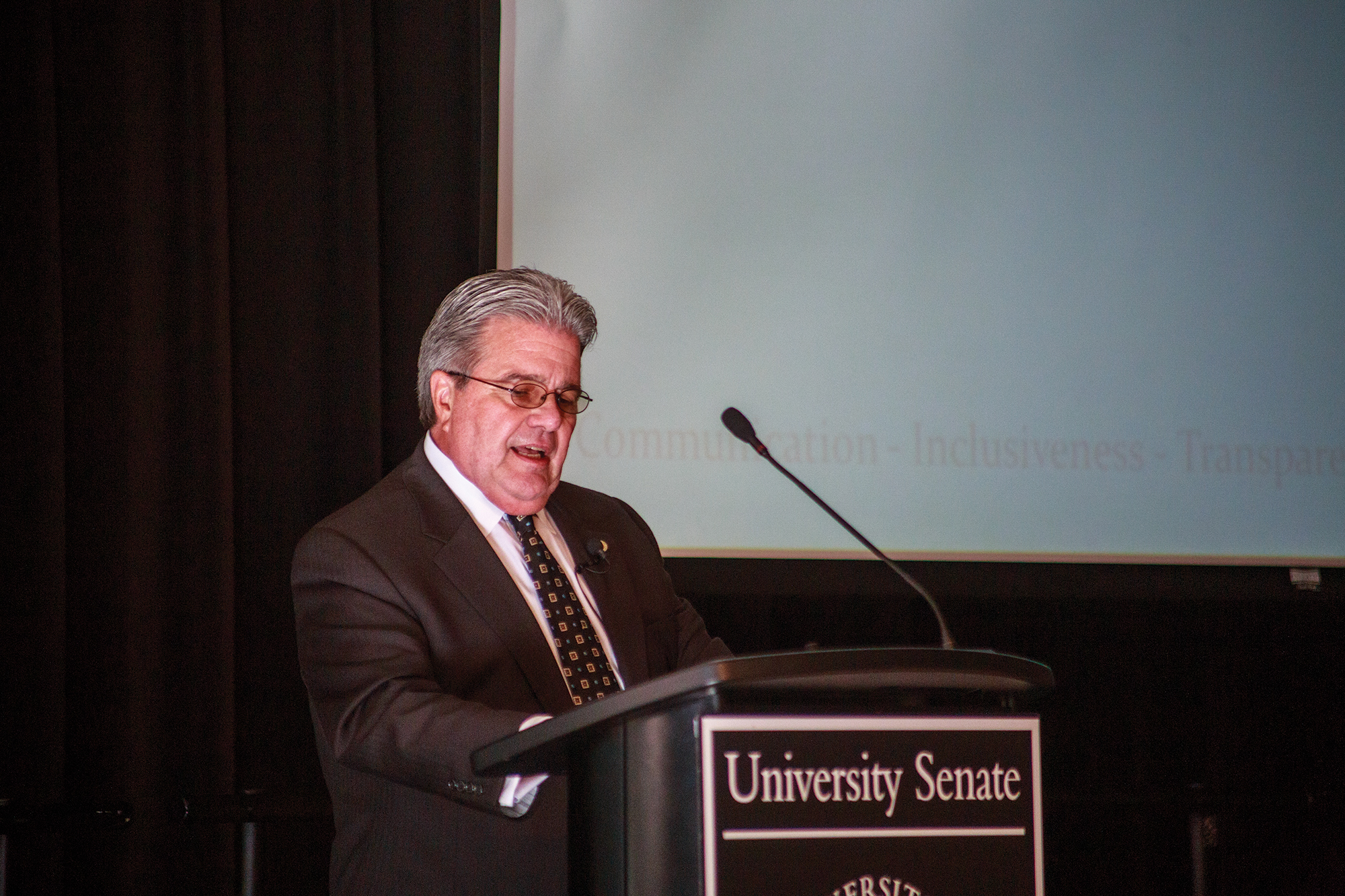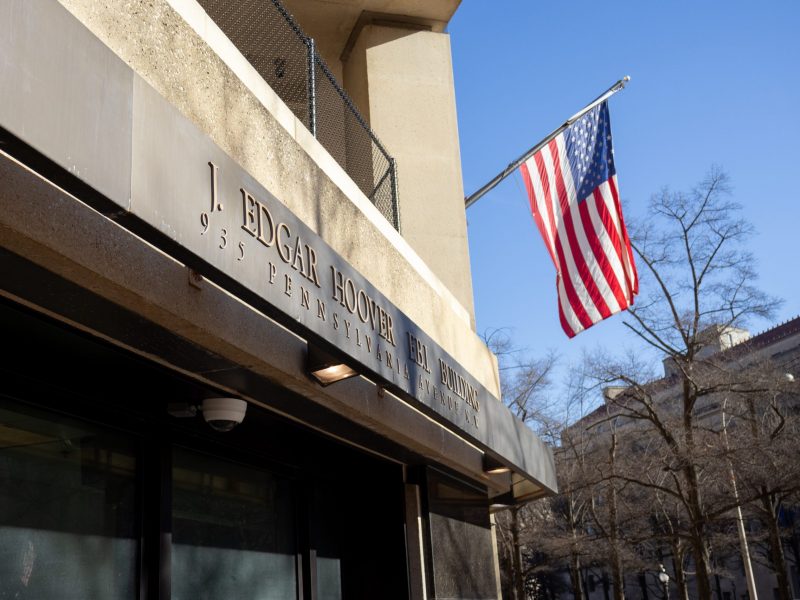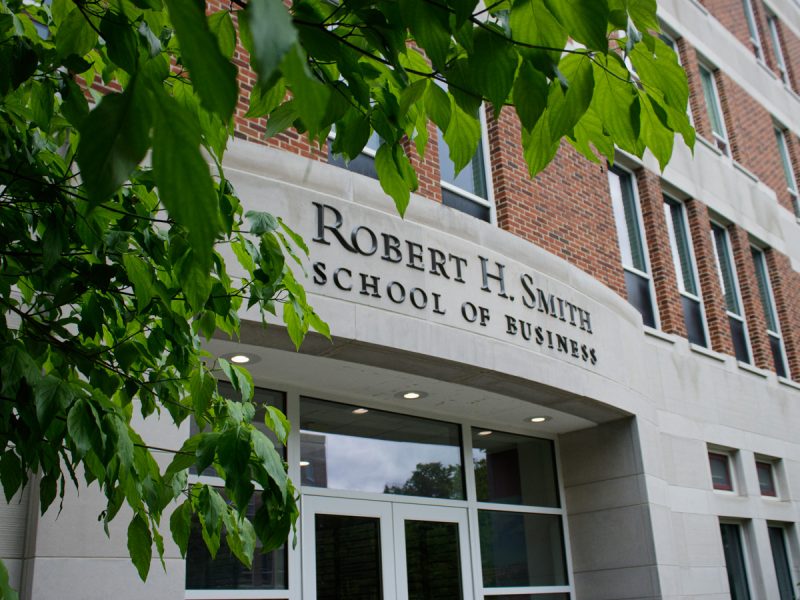The University System of Maryland has formed a new council to assess campus climates and foster diversity and inclusion among its 12 member institutions.
Following an initial meeting over the summer, the system’s Diversity and Inclusion Council met for the second time on Friday to continue addressing campus concerns across the system.
In late 2015, the Board of Regents formed a workgroup on diversity and inclusion after noticing increased campus activity in response to national issues, such as Freddie Gray’s death in Baltimore and protests among the University of Missouri football team concerning how the school handled racial tension, said Joann Boughman, system senior vice chancellor for academic affairs.
System Chancellor Robert Caret announced on Sept. 7 that the workgroup’s efforts led the board to establish a diversity and inclusion council, which will “carry this important work forward while maintaining open communication.”
The council includes 29 members from all system campuses, including chief diversity officers, provosts, vice presidents of student affairs, Title IX coordinators and two students, Boughman said. The council has also divided itself into three subcommittees, which will articulate a broad mission statement of principles for the council, look into a campus climate study and review assessment and reporting processes, she added. Five people from the University of Maryland are involved with this council so far.
Every other month, the council will meet, and each subcommittee will be working on its designated issue in the interim, Boughman said.
The chancellor and the board expect the council to “dive deep” to examine diversity and inclusion issues on each campus and figure out how the system can improve moving forward, she said. The council will address a range of identities within diversity and inclusion — including race, gender, religion and sexual orientation, she said.
The subcommittee focusing on the campus climate survey hopes to have an assessment to administer to USM students, staff and faculty by the end of the academic year, Boughman said. It is striving for a high response rate to capture the “disparate voices” and “various perspectives” that are necessary to accurately assess the situation and create meaningful change, she added.
Luke Jensen, this university’s LGBT equity center director, said coming up with a system-wide approach while still honoring the differences of individual institutions is a “work in progress.”
The University of Baltimore, for example, doesn’t have any residence halls, Jensen said. The system also includes historically black colleges and universities and smaller liberal arts colleges like Frostburg, Towson and Salisbury in addition to its flagship research university, Jensen added.
All of these factors influence what diversity and inclusion look like on individual campuses, Jensen said.
“There are certain core ideas, principles, concerns problems that are common to all of us,” Jensen said. “… There are things that we do have in common, but then there needs to be flexibility in this assessment that allows for the different natures of the institutions.”
Jensen serves on the campus climate survey subcommittee, although they said assessing campus climate will require more than a survey. Jensen suggested some focus groups, additional surveys or other processes that contribute to further study.
While diversity and inclusion efforts in higher education historically focus on different identities such as race or class or gender, Jensen said educators need to adopt a more comprehensive approach to this work.
“The transgender student that comes into my office also has a race, also has ability or disability, also has an income bracket that they fall into,” Jensen said. “So we need to take [into] account the whole student.”
Senior Shabnam Ahmed, the undergraduate representative on the council, said it is her job to serve as a voice for the students and ensure that the actions of the council are in students’ best interest.
While this campus offers many resources, offices and other sources of support around diversity and inclusion, including MICA and the Nyumburu Cultural Center, these efforts are not “embedded in everything that we do,” Ahmed said.
“By us seeing diversity and inclusion as like this separate thing that you go to or you seek versus something that should be ingrained in everything that exists around you, that kind of defeats the purpose of creating a diverse environment,” the global public health and development major said. “Every department, every aspect of the university needs to … prioritize [diversity and inclusion] in some way.”
Another challenge to fostering diversity and inclusion on the campus is reaching populations that need the message most, but are often uninterested or unwilling to participate in these dialogues or events, she added.
While the members of the council are tasked with addressing a complex set of issues, Boughman said its work is “a high priority.”
“It being complex and difficult doesn’t mean we shouldn’t meet it head on,” she said. “And that’s what we’re trying to do.”



